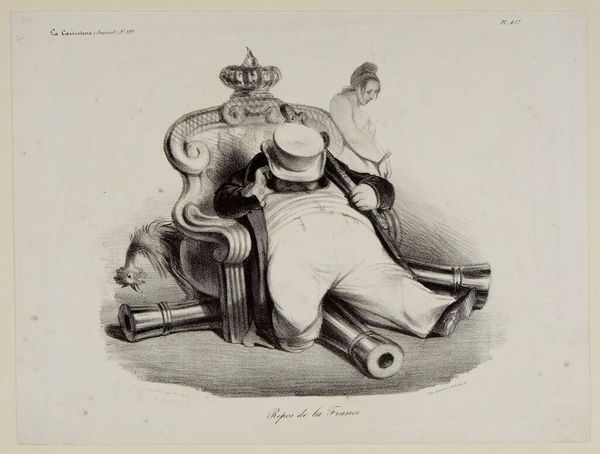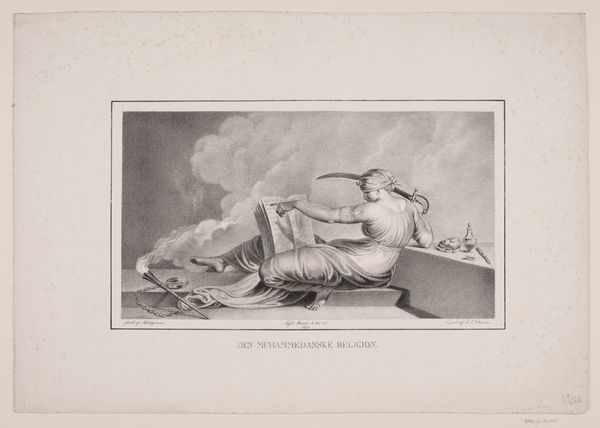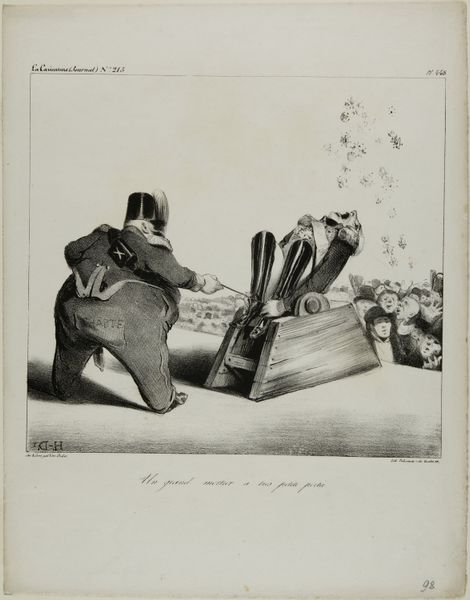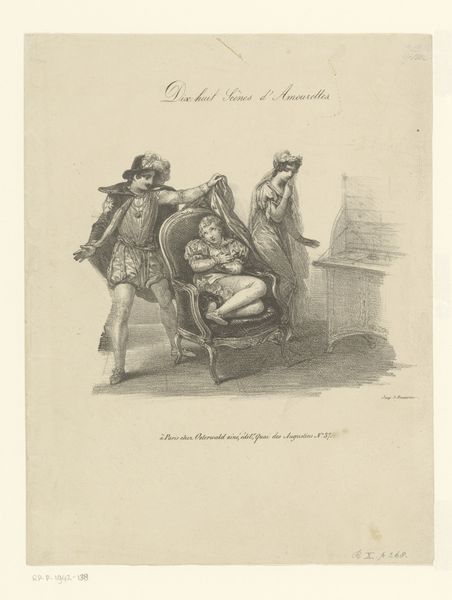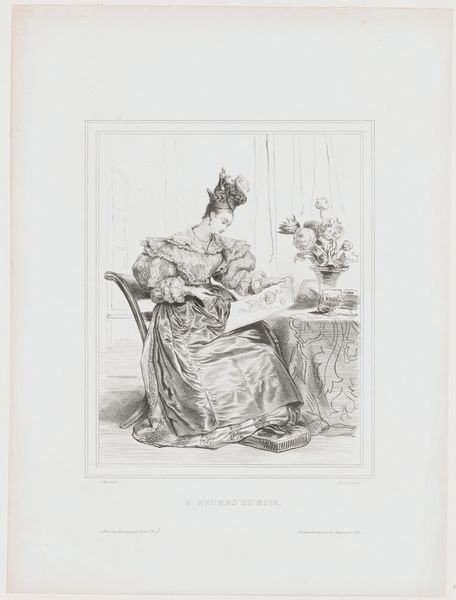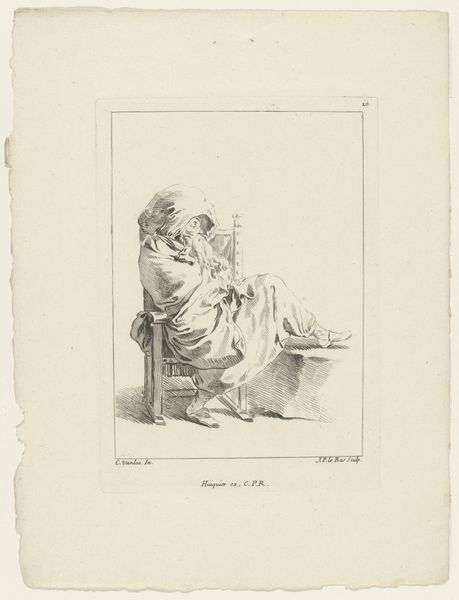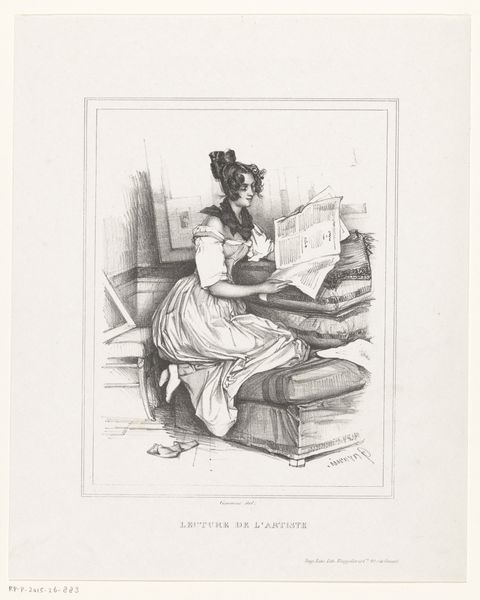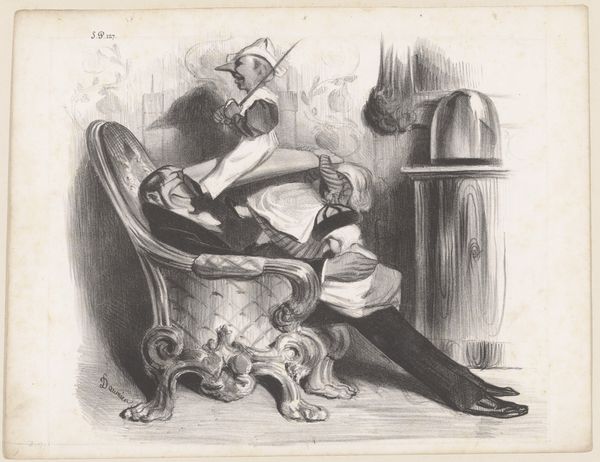
drawing, lithograph, print, paper
#
drawing
#
narrative-art
#
lithograph
# print
#
french
#
caricature
#
figuration
#
paper
#
france
Dimensions: 216 × 253 mm (image); 274 × 365 mm (sheet)
Copyright: Public Domain
Editor: This is Honoré Daumier's "The Repose of France, plate 417," a lithograph from 1834. It has this almost deflated, sad energy, and the central figure seems to be sinking into the throne. What can you tell me about this work? Curator: It's striking, isn't it? Daumier was a master of social commentary, particularly through caricature. The piece encapsulates France in 1834, under Louis-Philippe’s reign. Consider the title itself – "Repose." Is it truly rest, or a stagnant exhaustion after the revolutionary fervor? Note the cannons casually placed; are they symbols of enforced peace or suppressed dissent? How does that inform the narrative? Editor: I see what you mean. The cannons are almost like toys, but dangerous ones. What about the figure in the background? Curator: That's France personified as a weary woman, a deliberate contrast to the powerful, yet slumped, figure on the throne, who embodies Louis-Philippe. What does her positioning and subdued demeanor suggest about the state of the nation and its relationship with its ruler? Think about it through the lens of power dynamics and societal expectations. Editor: So it's not just about rest, but perhaps about a forced stillness or a disappointment with the current leadership? The hope of the revolution fading into…this? Curator: Precisely. Daumier often used his art to critique the bourgeoisie and the established order. The "repose" could be seen as the suppression of republican ideals. It prompts a critical examination of power, its effects, and the resulting socio-political landscape. It begs the question, whose rest is this truly serving? Editor: That makes the work much more complex and critical than I initially thought. It’s a powerful statement on a specific moment in French history. Thank you. Curator: And it’s a reminder that art is often deeply intertwined with its socio-political context, acting as both a mirror and a critique of society.
Comments
No comments
Be the first to comment and join the conversation on the ultimate creative platform.
